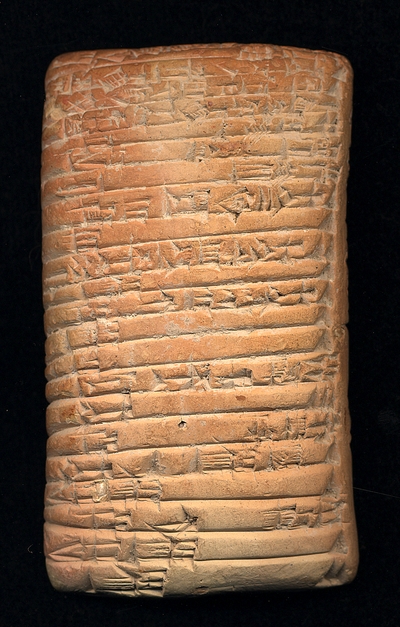In the 4th millennium BCE, proto-writing began to evolve into phonetic writing systems in Egypt, India, Iran, and Sumer. In approximately 3400 BCE, Sumerians began transforming their primitive pictographic system into one featuring syllabic, alphabetic, and logophonetic symbols.1 Between its first appearance in 3400 BCE and its replacement by the Roman alphabet in the first century CE, the Sumerian symbol group decreased in size from 1,000 characters to approximately 400, with a corresponding increase in sophistication.
The Egyptian hieroglyphic system, using both logographic and alphabetic elements, was developed circa 3300 BCE, probably as a result of exchanges between Egypt and Sumerian Mesopotamia. The Egyptian hieroglyphic system was used until the 5th century BCE.2 Various proto-writing systems also appeared in Pakistan, Mesopotamia, Anatolia, and elsewhere. The first "alphabet", the Proto-Canaanite system, consisted of a limited selection of symbols developed by Egyptian Semites in 1800 BCE to produce phonetic spellings of the Phoenician language.3 The alphabet was introduced to civilizations across the Mediterranean by the sea-faring Phoenicians and became the basis for the Greek alphabet. In turn, Alexander the Great spread Greek across the Western world, a process which eventually spawned the Latin and Cyrillic alphabets and led to written language in the West.
Notes
- Fischer, Steven Roger. A History of Writing (London, England: Reaktion Books, 2001), 35. Return to text ↑
- Fischer, Steven Roger. A History of Writing (London, England: Reaktion Books, 2001), 36-47. Return to text ↑
- Coulmas, Florian. Writing Systems of the World (Oxford, England: Basil Blackwell, 1989), 141. Return to text ↑

Sumerian Cuneiform Tablet. 2041 BCE. More images here
